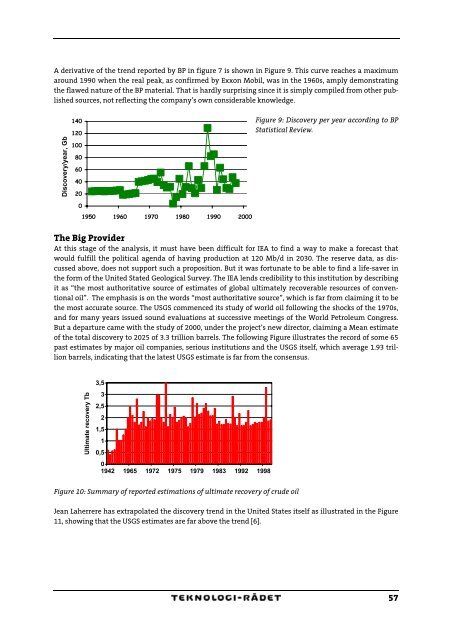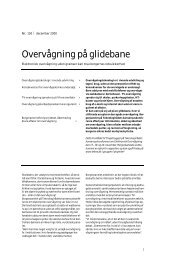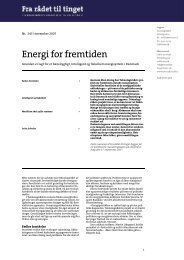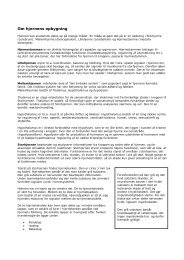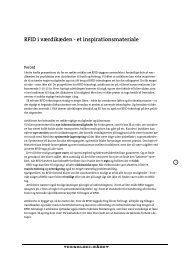Energi i fremtiden - globale, regionale og nationale ... - Teknologirådet
Energi i fremtiden - globale, regionale og nationale ... - Teknologirådet
Energi i fremtiden - globale, regionale og nationale ... - Teknologirådet
Create successful ePaper yourself
Turn your PDF publications into a flip-book with our unique Google optimized e-Paper software.
A derivative of the trend reported by BP in figure 7 is shown in Figure 9. This curve reaches a maximum<br />
around 1990 when the real peak, as confirmed by Exxon Mobil, was in the 1960s, amply demonstrating<br />
the flawed nature of the BP material. That is hardly surprising since it is simply compiled from other published<br />
sources, not reflecting the company’s own considerable knowledge.<br />
Discovery/year, Gb<br />
140<br />
120<br />
100<br />
80<br />
60<br />
40<br />
20<br />
0<br />
1950 1960 1970 1980 1990 2000<br />
Figure 9: Discovery per year according to BP<br />
Statistical Review.<br />
The Big Provider<br />
At this stage of the analysis, it must have been difficult for IEA to find a way to make a forecast that<br />
would fulfill the political agenda of having production at 120 Mb/d in 2030. The reserve data, as discussed<br />
above, does not support such a proposition. But it was fortunate to be able to find a life-saver in<br />
the form of the United Stated Geol<strong>og</strong>ical Survey. The IEA lends credibility to this institution by describing<br />
it as “the most authoritative source of estimates of global ultimately recoverable resources of conventional<br />
oil”. The emphasis is on the words “most authoritative source”, which is far from claiming it to be<br />
the most accurate source. The USGS commenced its study of world oil following the shocks of the 1970s,<br />
and for many years issued sound evaluations at successive meetings of the World Petroleum Congress.<br />
But a departure came with the study of 2000, under the project’s new director, claiming a Mean estimate<br />
of the total discovery to 2025 of 3.3 trillion barrels. The following Figure illustrates the record of some 65<br />
past estimates by major oil companies, serious institutions and the USGS itself, which average 1.93 trillion<br />
barrels, indicating that the latest USGS estimate is far from the consensus.<br />
Ultimate recovery Tb<br />
3,5<br />
3<br />
2,5<br />
2<br />
1,5<br />
1<br />
0,5<br />
0<br />
1942 1965 1972 1975 1979 1983 1992 1998<br />
Figure 10: Summary of reported estimations of ultimate recovery of crude oil<br />
Jean Laherrere has extrapolated the discovery trend in the United States itself as illustrated in the Figure<br />
11, showing that the USGS estimates are far above the trend [6].<br />
57


